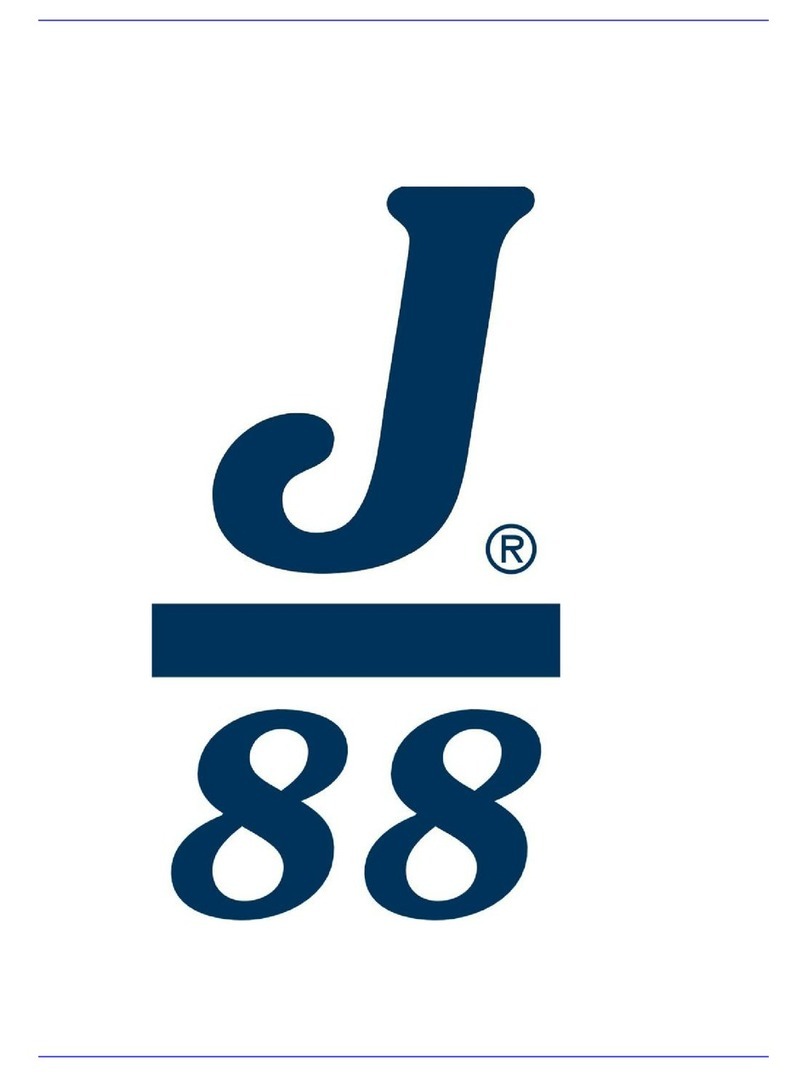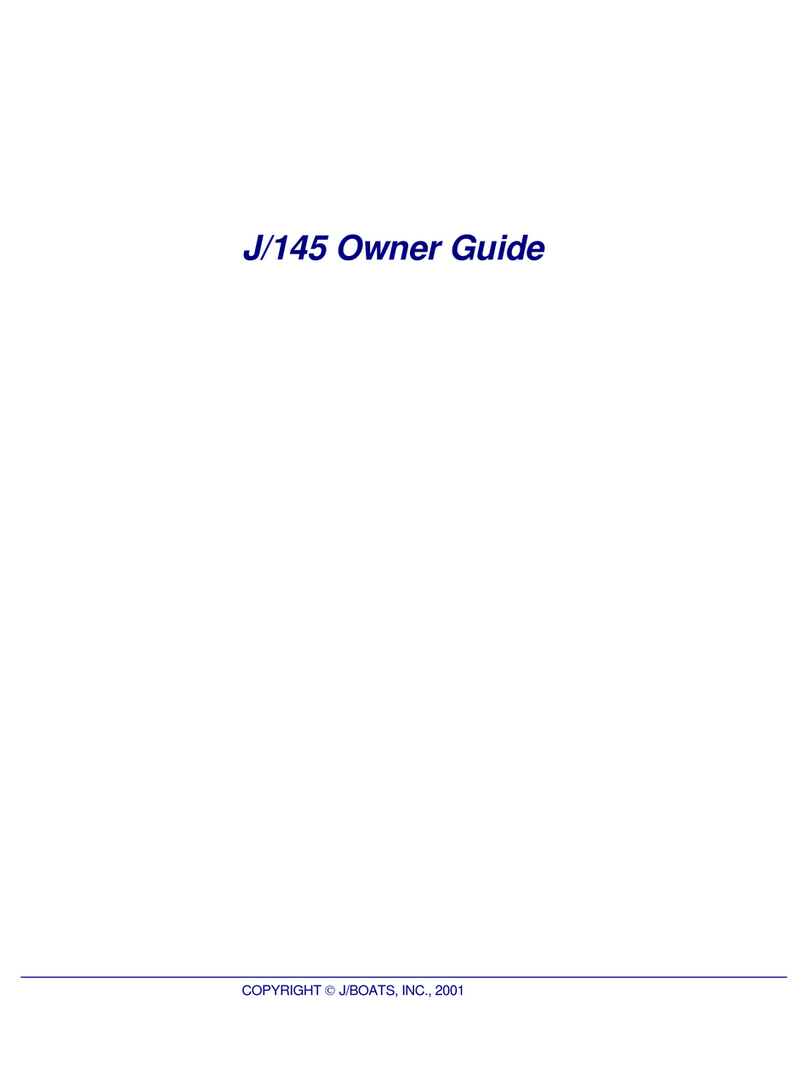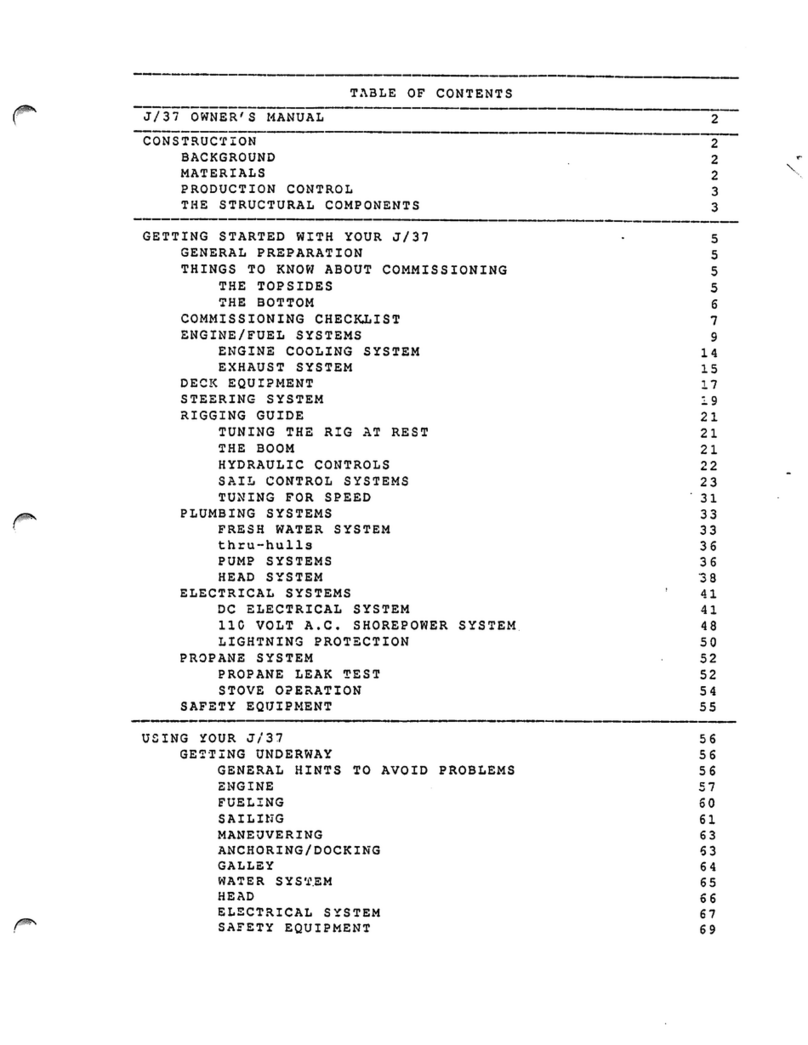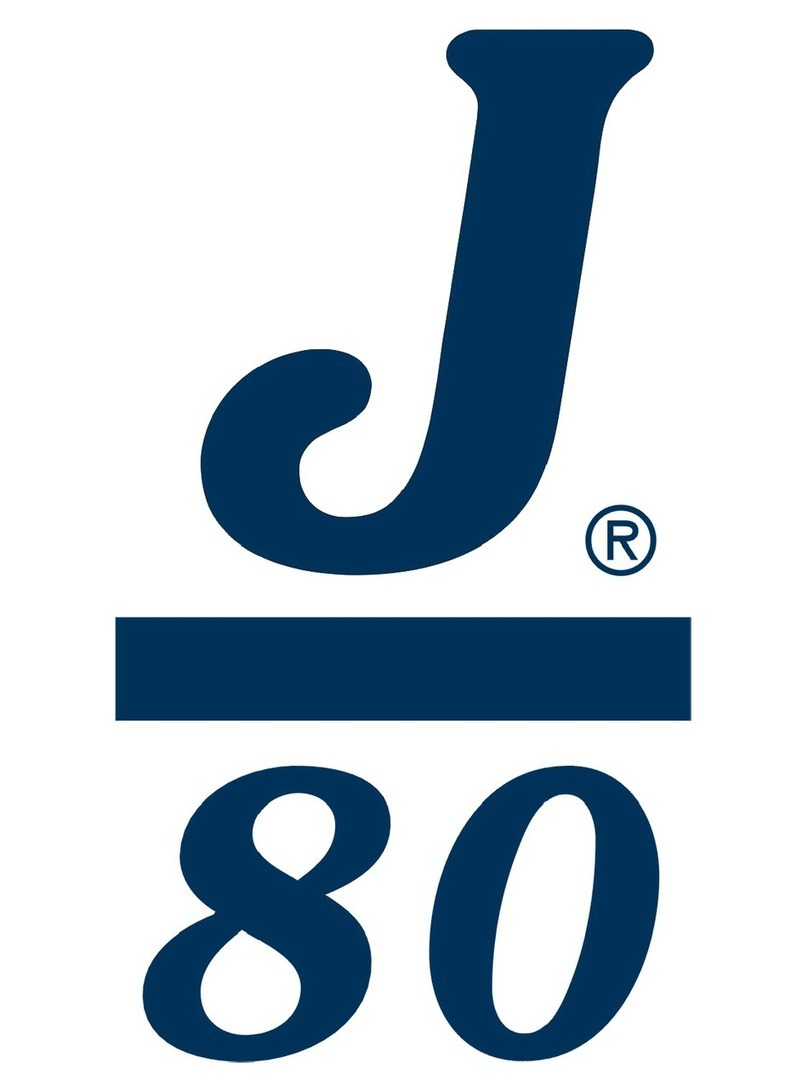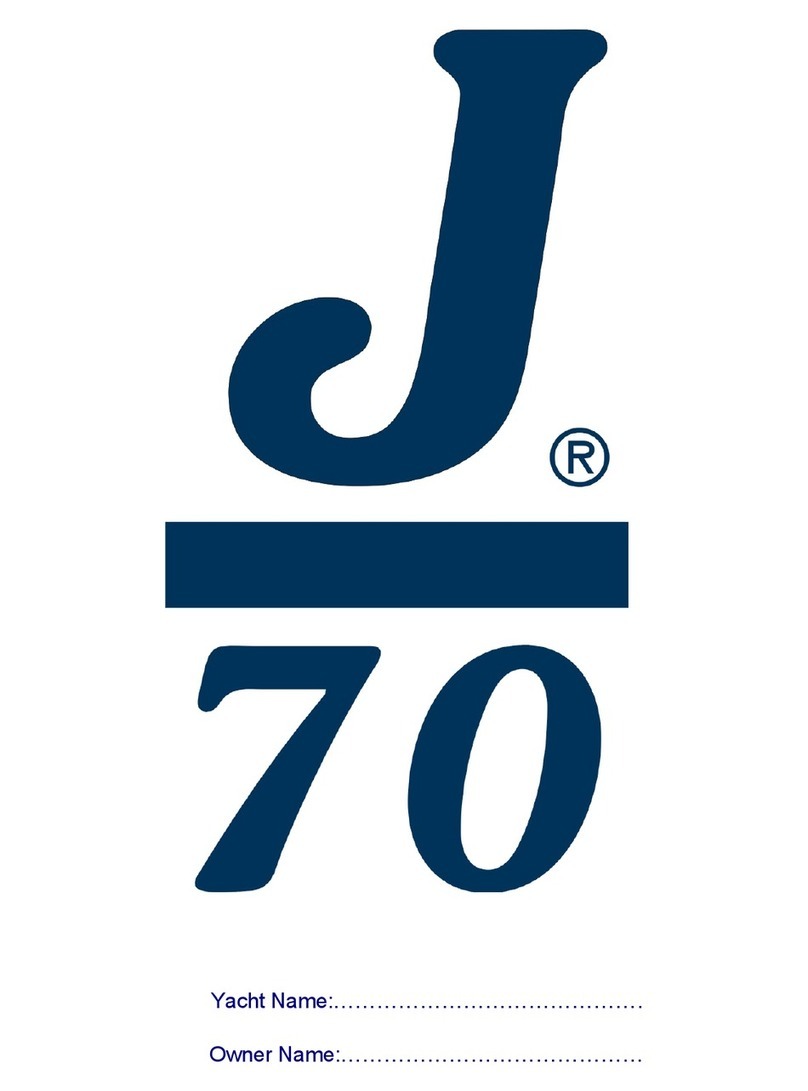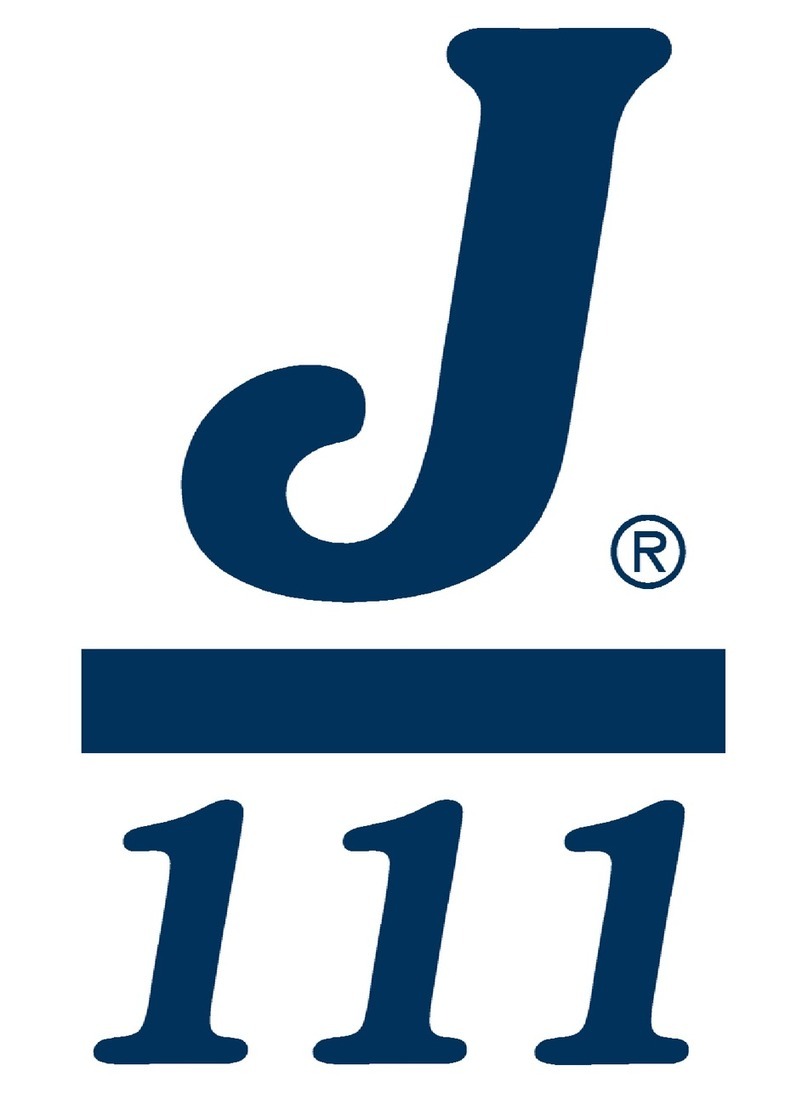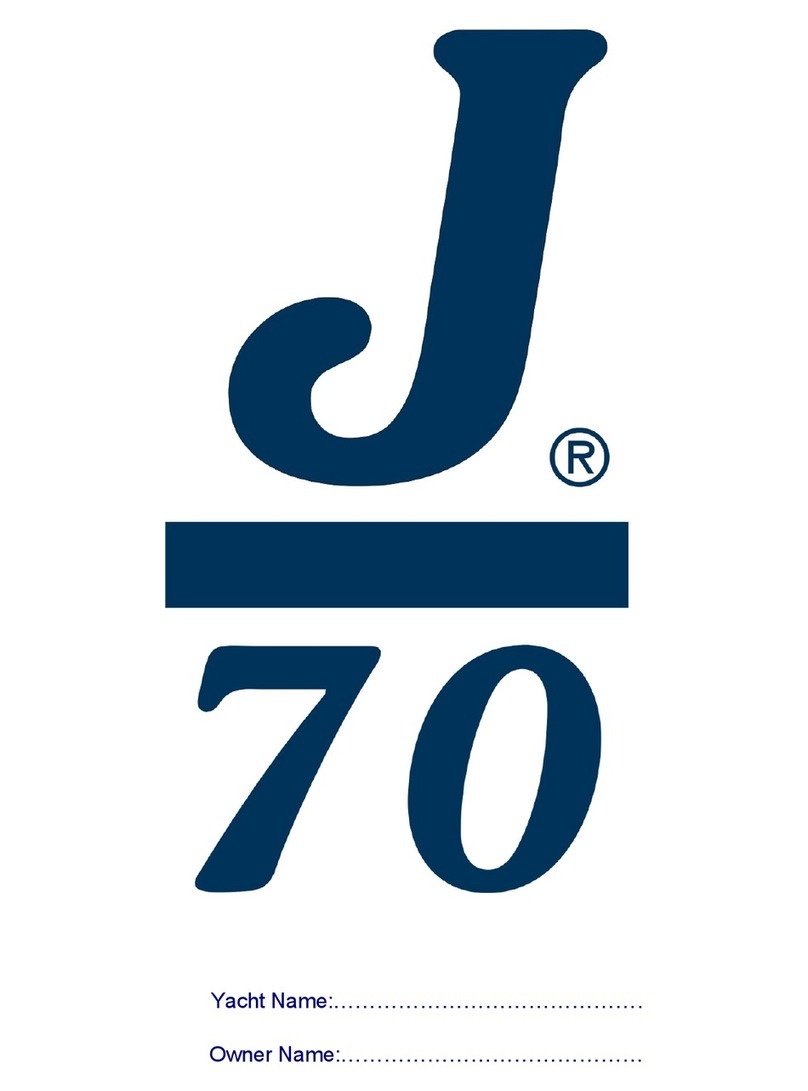
J EUROPE – Parc Actilonne – 85340 Olonne sur Mer – France – www.jeurope.eu.com
J/92 S – Page 4/27
Dear “J” Owner,
Welcome aboard … and welcome to the “family of J owners”.
This manual has been compiled to help you to use and enjoy your vessel safely. It contains
details on the vessel, the equipment supplied or installed, its systems and information on their use.
Read it carefully and familiarise yourself with the vessel before you use it. Even if your vessel is
rated for them, the sea and wind conditions corresponding to design categories A, B and C vary
from a strong storm to severe conditions with the risk of abnormal waves or gusts. These are
therefore dangerous conditions, in which only an experienced, fit and well-trained crew operating a
well-maintained vessel can navigate satisfactorily.
Ensure that the forecast wind and sea conditions match your vessel’s design category and that
you and your crew are capable of operating the vessel in these conditions.
This owner’s manual is not a course in navigating safely or exercising marine common sense.
If this is your first vessel or if you are changing to a type of vessel with which you are not familiar,
for your own comfort and safety ensure that you obtain experience in manoeuvring and operating it
before you take over the controls. Your dealer, your national sailing federation or your local yacht
club will be pleased to inform you of the sailing schools and competent instructors in your area.
This owner’s manual is not a detailed maintenance or repairs guide. In case of difficulties,
contact the vessel’s manufacturer or his representative.
Always use the services of an experienced profession for maintenance and fitting accessories.
Any modifications that may affect the vessel’s safety characteristics must be assessed, performed
and documented by appropriately skilled people. The vessel’s manufacturer cannot be held
responsible for any modifications he has not approved.
NB: Any change in the weight distribution on board (for example, the addition of a raised fishing
platform, radar or a reefing mast, changing an engine, etc.) can affect the stability, trim and
performance of your vessel.
Users of this vessel are advised that:
-All the crew must receive appropriate training;
-The vessel must not be loaded beyond the maximum load recommended by the
manufacturer;
-Any water in the bilges must be kept to a minimum;
-Stability is reduced when weight is added to the tops;
-In the event of heavy weather, the hatch covers, lockers and doors must be closed to
minimise the risk of water penetrating;
-Stability may be reduced when towing a vessel or lifting heavy weights using davits or the
boom;
-The compartments marked as being air reservoirs must not be pierced;
-Breaking waves represent a significant danger to stability;
-In certain countries, a navigation licence or authorisation is required or specific
regulations are in force.


